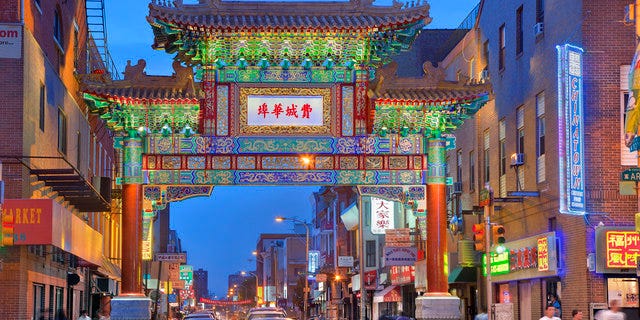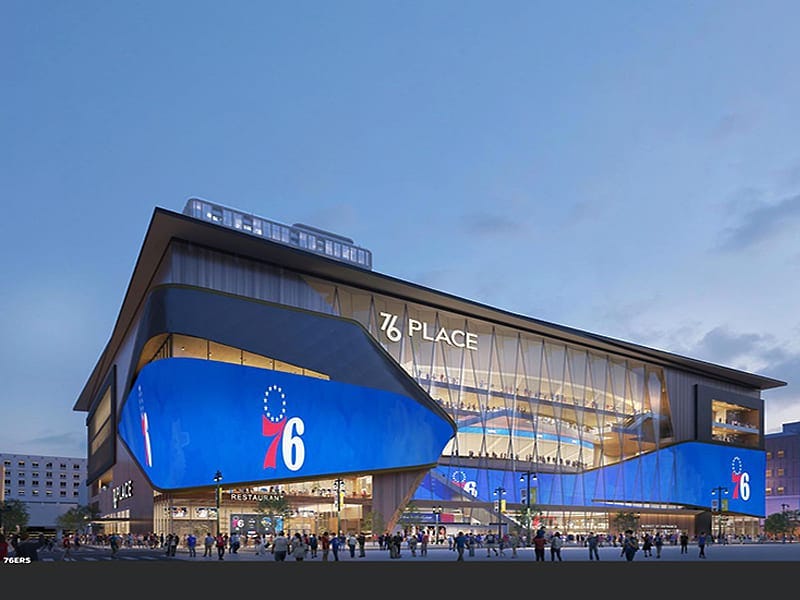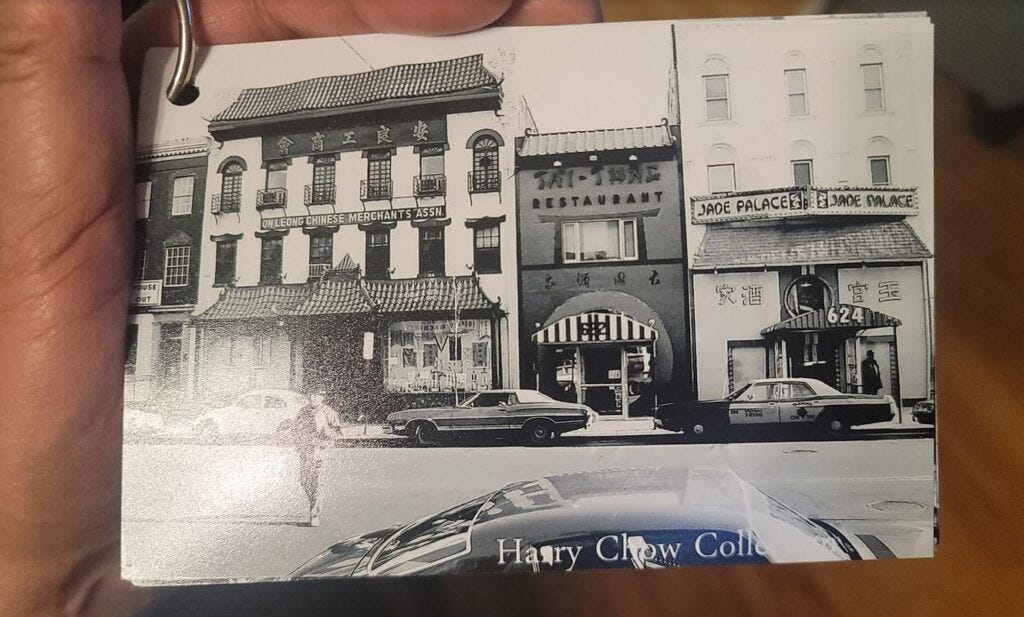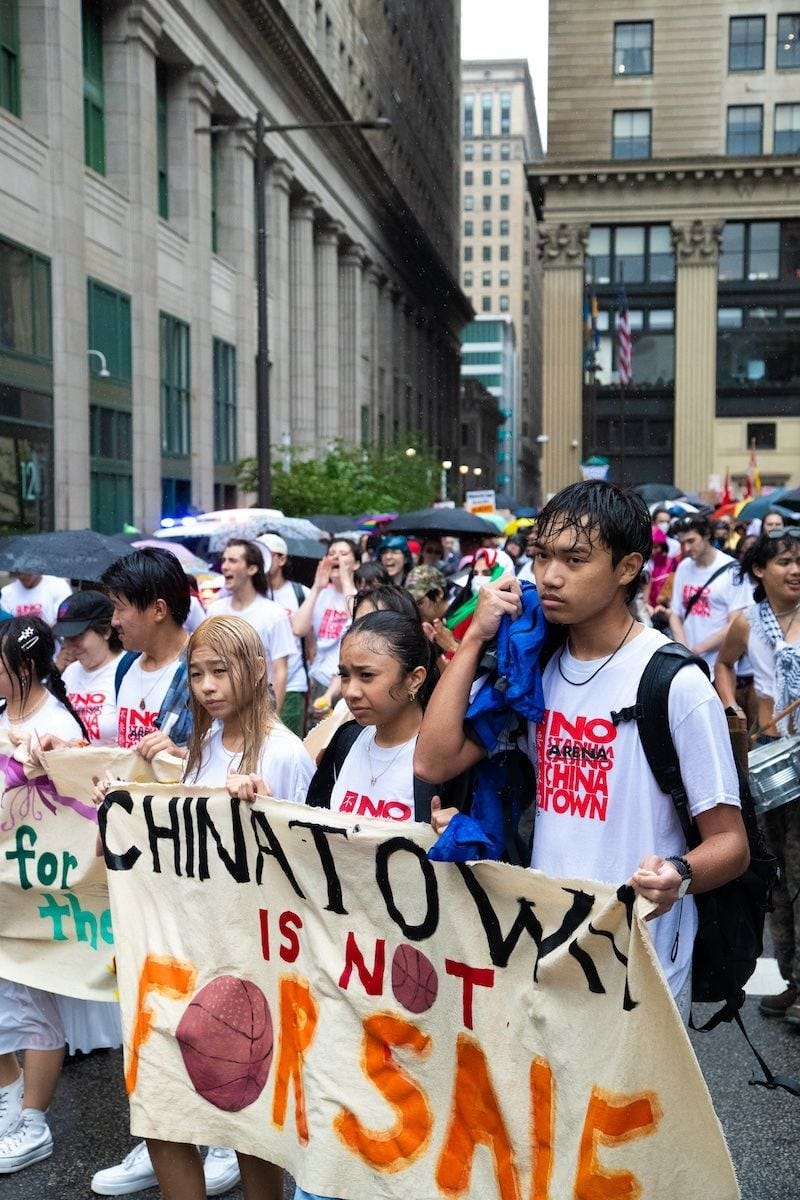Why are Chinatowns targeted for demolition?
As Philadelphia plans a new arena near Chinatown, take a look at the consequences of urban renewal from the last century.
Philadelphia’s Chinatown, a vibrant neighborhood with deep cultural roots, is currently embroiled in a struggle over the proposed construction of a new arena for the Philadelphia 76ers. The $1.5 billion project, called "76 Place," would be located near the heart of Chinatown, potentially displacing local businesses and disrupting the community’s cultural identity. Though proponents argue the arena will bring economic growth and jobs, critics, particularly activists within the Chinatown community see it as another instance of gentrification that threatens to erase a neighborhood that has survived numerous redevelopment pressures in the past.
This latest threat to Chinatown is far from an isolated incident. The history of Chinatowns across the United States reveals a pattern of displacement that often accompanies urban development, as Chinese-American communities face the loss of homes, businesses, and cultural landmarks in the name of progress. To understand the stakes in Philadelphia, it's important to look at the broader historical context of Chinatown redevelopment and the activism that has emerged in response.
A History of Displacement: Key Examples of Chinatown Destruction
1960s – St. Louis, Missouri: Hop Alley Demolition
In the 1960s, St. Louis’s Chinatown, known as Hop Alley, was razed to make way for the construction of a stadium for the St. Louis Cardinals. Hop Alley had been home to a vibrant Chinese-American community since the late 1800s, filled with small businesses, restaurants, and social clubs. However, urban renewal projects, which aimed to modernize and expand the city’s downtown, prioritized stadiums and infrastructure over the preservation of communities like Chinatown. The destruction of Hop Alley is one of the most striking examples of how redevelopment often prioritizes commercial interests, with little regard for the cultural heritage and economic stability of minority communities.

1950s-1960s – Los Angeles, California: Destruction of Chinatown for Union Station
Los Angeles’s Chinatown, which once thrived near Union Station, was largely demolished in the 1950s and 1960s to make room for the station’s expansion. The area was home to a thriving immigrant community, but redevelopment led to the displacement of thousands of Chinese residents. The city’s decision to bulldoze much of Chinatown for a transportation hub was part of a larger trend across the U.S. in the mid-20th century, where neighborhoods of color, particularly immigrant communities, were often viewed as expendable for the sake of urban modernization. In response to the loss of this community, a new Chinatown was developed on the outskirts of downtown Los Angeles, though it never recaptured the same sense of connection to the city’s core.
1990s – Washington, D.C.: Impact of the Capital One Arena
In Washington, D.C., the construction of the Capital One Arena in the 1990s also had a profound effect on Chinatown. The arena, built in a central location in the city, resulted in the displacement of many long-standing Chinese businesses and residents. While some businesses were able to relocate, others struggled to survive the rapid rise in property values and rents. Chinatown in D.C. still bears the scars of this urban renewal project, with many local activists arguing that it contributed to the erosion of the neighborhood’s cultural identity. The Capital One Arena remains a focal point for debates about whether urban development can coexist with the preservation of minority communities.
1990s – Philadelphia, Pennsylvania: Vine Street Expressway
Philadelphia’s Chinatown has faced similar challenges with urban development before. In the 1990s, the construction of the Vine Street Expressway effectively divided the neighborhood, cutting through the heart of Chinatown. The highway project isolated parts of the community and displaced businesses that had been part of the fabric of Chinatown for generations. While efforts have been made to address some of these issues—such as the development of pedestrian overpasses to reconnect the community—the scars of the expressway remain visible today. The arena proposal for East Market Street is just the latest in a series of threats to a neighborhood that has long struggled against the forces of gentrification and urban development.
Activism and Resistance: Fighting for Chinatown’s Future
In response to these threats, Chinatown communities across the country have organized and fought back against redevelopment efforts. In Philadelphia, the Save Chinatown Coalition has been a leading voice in opposing the 76ers' arena proposal. Activists argue that while the project promises jobs and economic benefits, it will also contribute to rising rents and displacement, particularly for small businesses that serve the local Chinese-speaking population. These businesses, often family-owned and culturally significant, are already struggling with escalating rents in the face of ongoing gentrification.
The Save Chinatown Coalition and other local advocacy groups have emphasized the need for the city to prioritize the preservation of Chinatown’s cultural and economic integrity. They point to past successes in other cities, where community organizing has led to victories in preserving Chinatowns and ensuring that redevelopment projects benefit local residents, not just outside investors.
As Philadelphia's Chinatown faces the looming threat of displacement, the history of similar battles across the country serves as a reminder of the challenges immigrant communities face when development projects clash with their need for cultural preservation. The outcome of this latest struggle in Philadelphia could set a precedent for how cities across the U.S. handle the delicate balance between urban renewal and the preservation of their most vulnerable neighborhoods. Activists remain hopeful that their efforts will help safeguard Chinatown’s future, just as previous generations of organizers have fought to protect their communities from erasure.
Sources:
History of Hop Alley, Mary Andino
The Old Los Angeles Chinatown, Damien Blackshaw
Philly Chinatown Residents Don’t Trust the Arena Development Process, Oscar Perry Abello











